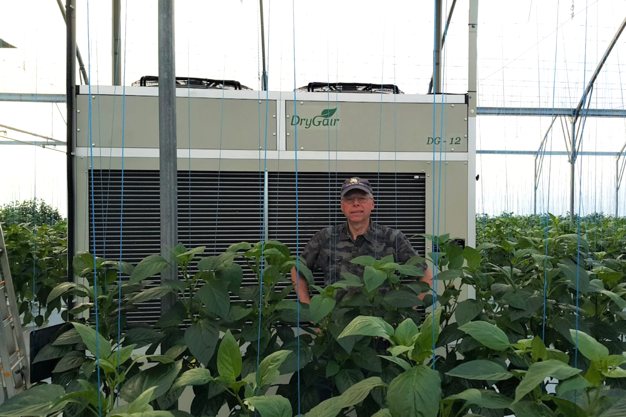"The New Zealand horticulture sector is quickly advancing from traditional greenhouse production to more efficient, sustainable cultivation. " Recently, a report was published, detailing an energy emission reduction matrix that any CEA grower can adopt to cut energy consumption.
 DG-12 at Southern Belle Orchard in Matamata
DG-12 at Southern Belle Orchard in Matamata
Energy emission reducing plan for greenhouse growers
The report was made by Worley, a sustainability consultancy firm, for the New Zealand EECA (Energy Efficiency & Conservation Authority), Vegetables NZ, and Tomatoes NZ. The first being a NZ government agency, and the latter two being grower organizations.
The matrix Worley has created is built as a flowchart and includes three basic elements: double-pane walls and ceilings, thermal screens, and dehumidification, using DryGair dehumidifiers as the benchmark. It goes into detail for every element, guiding growers through a simple series of 'yes or no' questions to optimize their greenhouse, according to their situation and needs.
A new way to grow – insulation and dehumidification
The matrix follows the basic principle of insulating the greenhouse, while actively reducing humidity, using a dehumidification system.
"The two complement each other perfectly. Insulation traps heat inside the greenhouse, significantly reducing heating requirements. Dehumidifiers are then used to extract the moisture that inevitably builds up in a closed greenhouse." According to the report, growers can expect to save 25-50% of their energy use by installing dehumidification.
"Together, these two elements create a controllable environment that is both ideal for plant growth and minimizes energy consumption."
Yield improvements: Southern Belle
The report describes several additional benefits of using dehumidification, such as a 15-25% increase in yield, reduced disease outbreaks, longer growing seasons, and reusable water generation.
One grower is mentioned as an example – Southern Belle, a pepper grower in Matamata. Southern Belle utilizes 2 DryGair DG-12 units in a 3,000m2 twin-skin plastic house.
"Southern Belle's 2018 investment in dehumidification has long been paid back. The ROI was achieved through a 25% reduction in heating fuel, and a 15% production increase, as a result of CO2 retention and fungal disease reduction."
Reduce energy consumption
"While this matrix was created for the New Zealand horticulture sector, it is an accurate representation of the global shift in greenhouse horticulture. The steps detailed in the report are relevant anywhere and may be helpful for growers attempting to cut energy costs or reduce their carbon emissions, worldwide."
Click here for the energy reducing matrix.
DryGair
www.drygair.com
Advanced Hort
www.advancedhort.co.nz










